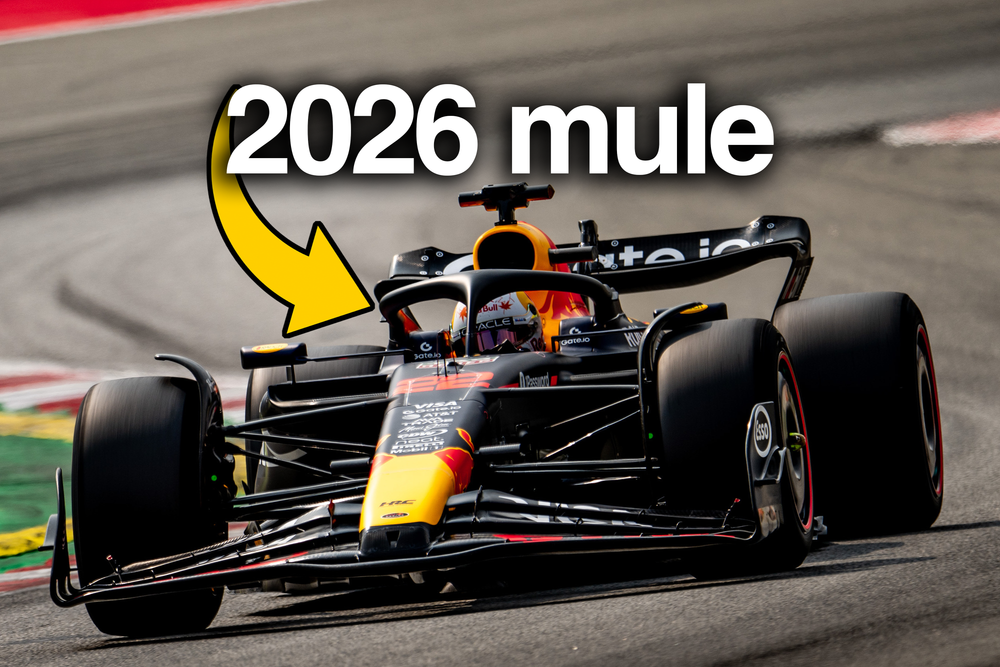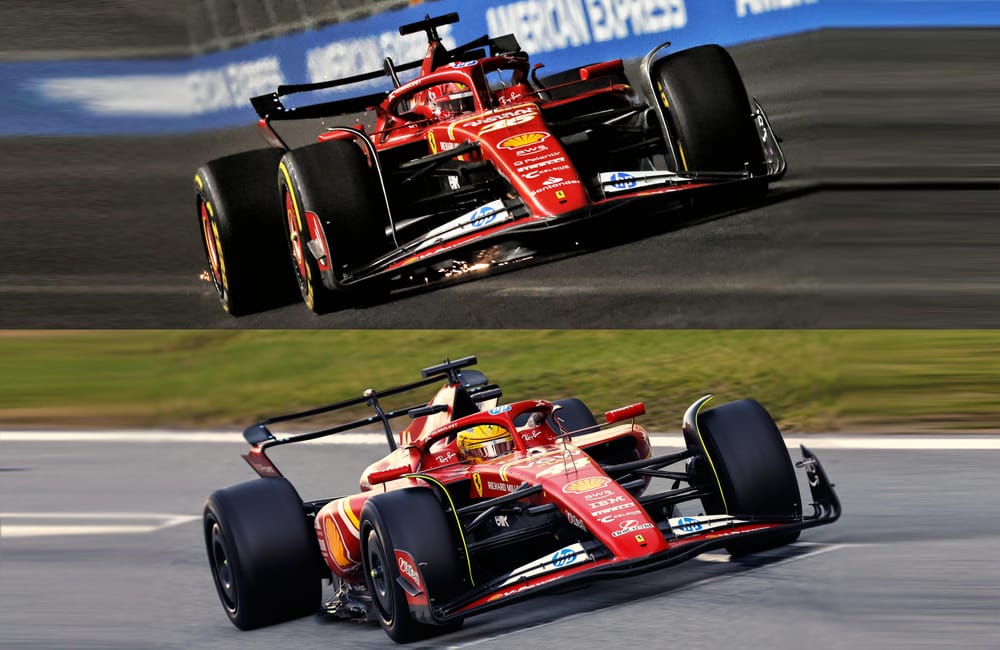Red Bull’s participation in this week’s Pirelli 2026 Formula 1 tyre test has given us another clear indication about how much downforce is going to be reduced next year.
Yuki Tsunoda completed a first run with the squad’s 2026 mule car at Barcelona in Spain on Wednesday.
The test car is its 2023 RB19 that has been adapted to simulate the kind of downforce that F1’s chiefs are predicting will become the norm for next season’s all-new rules.
Predictions at the moment are pitching next season’s cars to produce around 15-20% less downforce than the current generation of cars, which have shown a step up in performance over the winter.
The step-change in the anticipated performance is fairly obvious with just a quick glance at the wing levels that Tsunoda was running with.
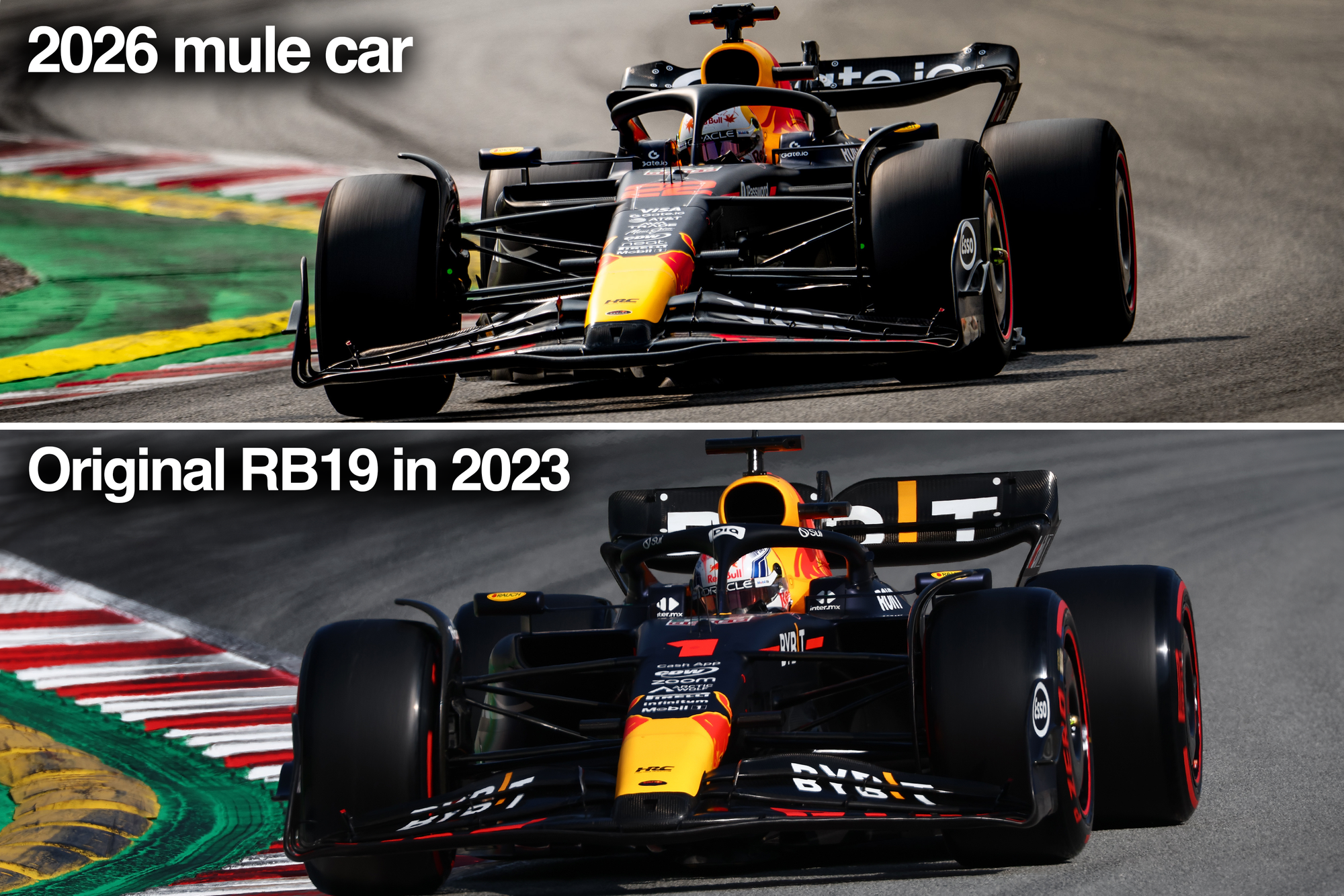
As this shot of Max Verstappen from the 2023 Spanish Grand Prix shows, F1 teams normally run a medium downforce level for the Barcelona test.
But Tsunoda’s run in the test shows him fitted with a wing level that is more akin to Monza and Las Vegas – where teams trim off the levels at both the front and rear for maximum straightline speed.
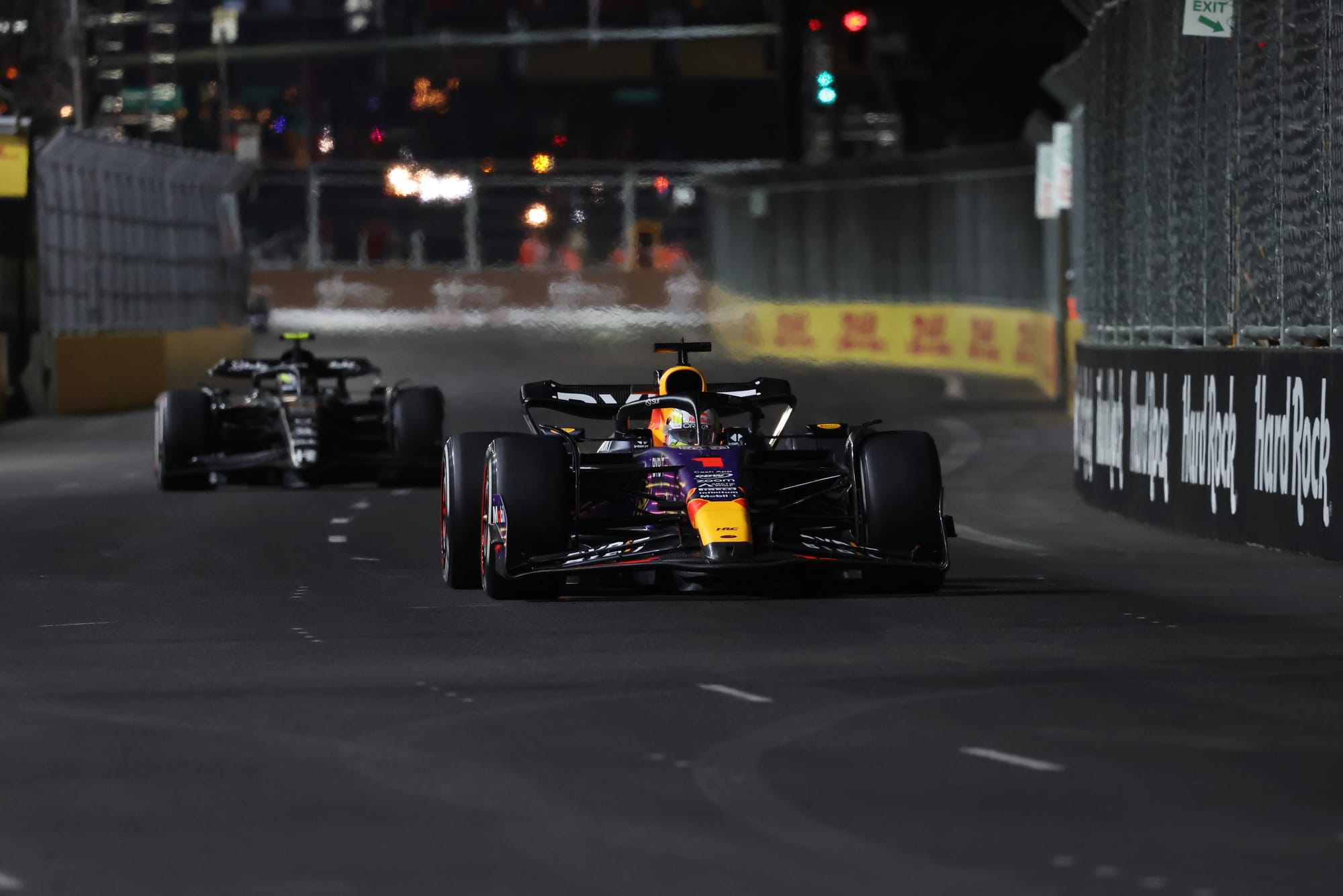
Here is a comparison image of the wing levels that Verstappen ran in the RB19 at the 2023 Las Vegas GP.
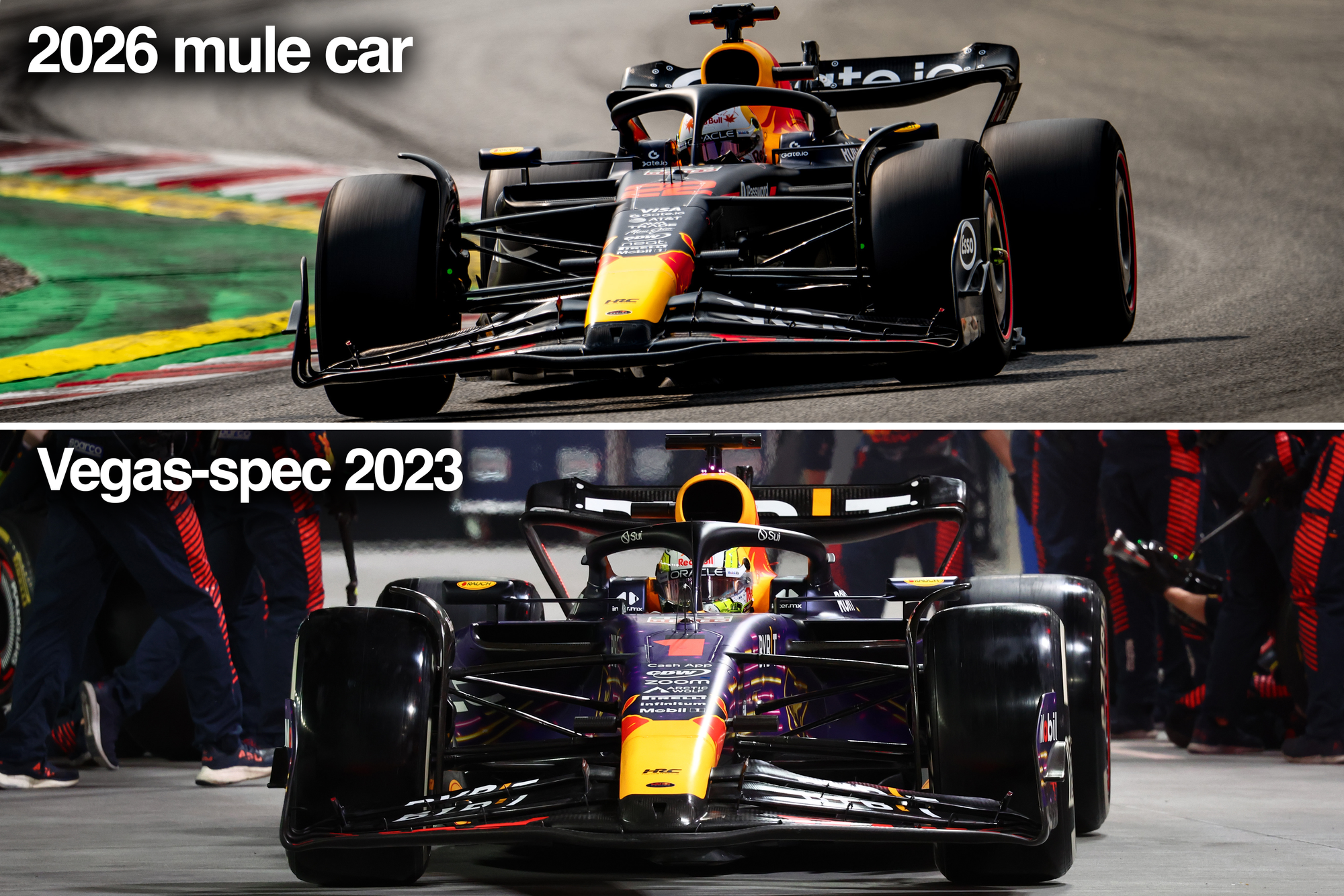
Downforce and performance drop
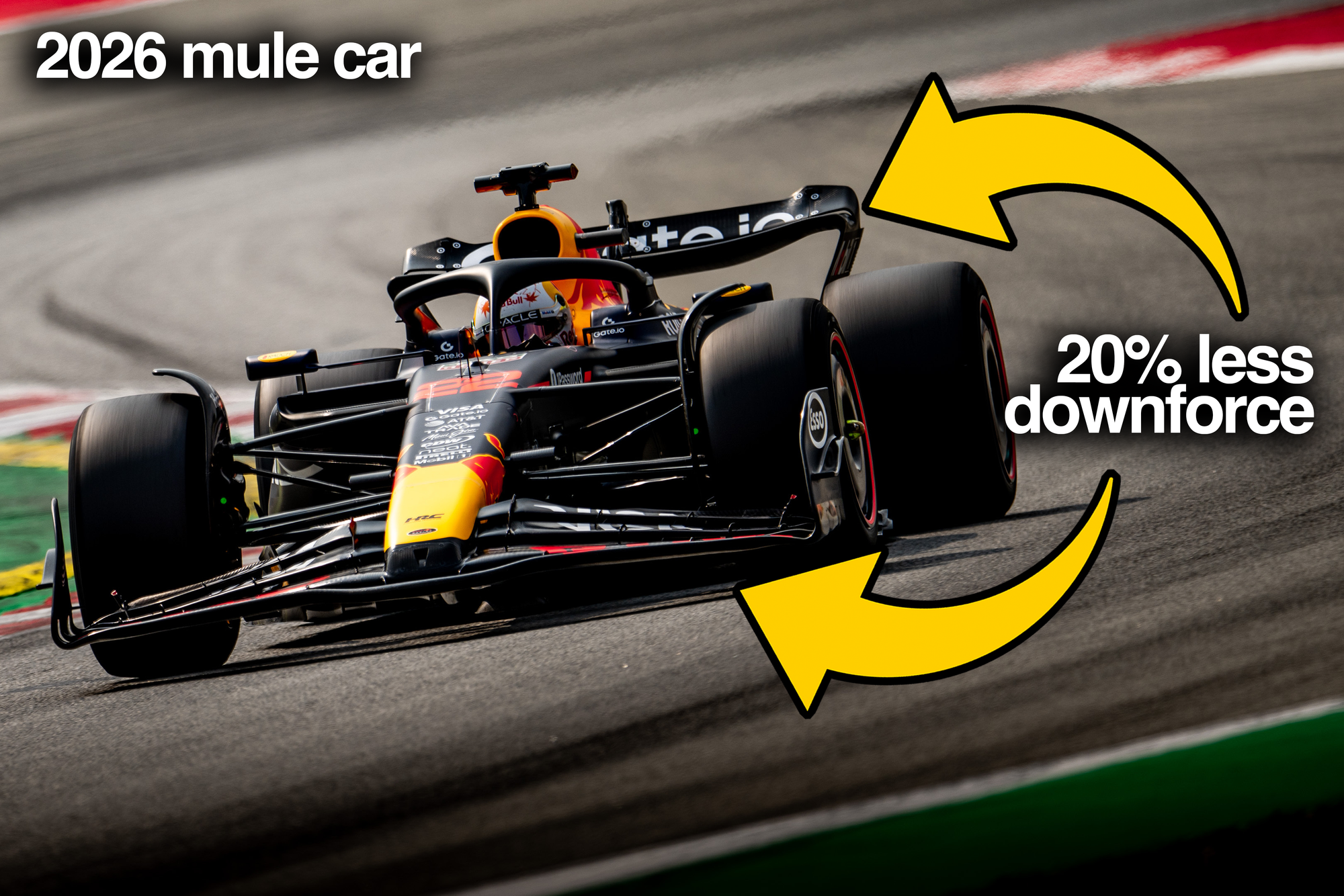
It has been suggested that the downforce of the mule cars is around 20% less than what we are seeing with the current F1 machinery.
And this explains why the laptimes from the test are adrift of what was seen over the Spanish GP weekend.
Over the two days of 2026 testing that Pirelli did at Barcelona with Red Bull, Racing Bulls and Mercedes, it was the latter’s Kimi Antonelli who set the fastest time with a 1m14.903s.
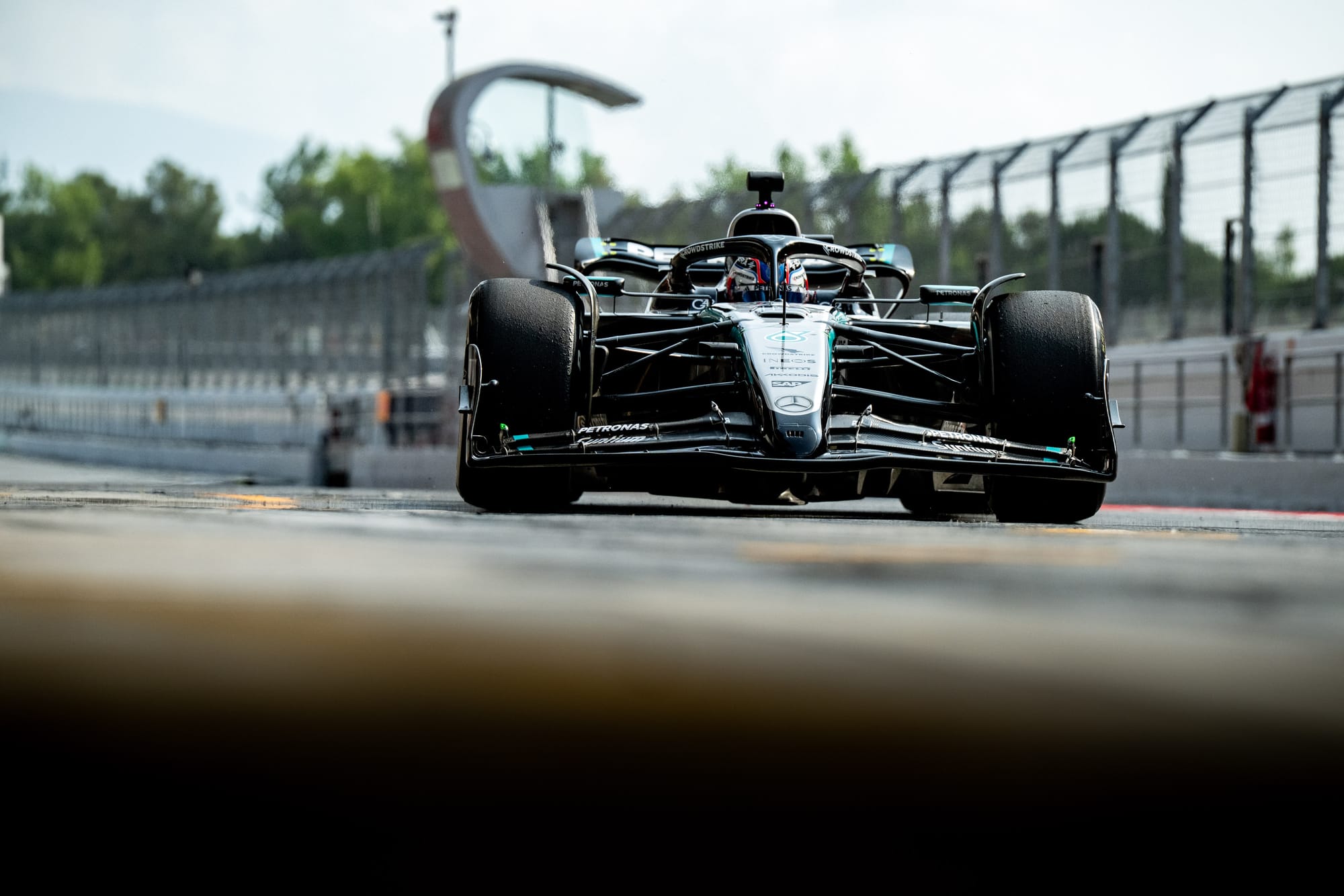
While this is quite a bit off Oscar Piastri’s pole position time from last weekend of a 1m11.546s , it will almost certainly not have been done with the car anywhere near its optimum for a single lap pace.
It is also slower than all the best effort from practice - where the top times were 1m13.718s from FP1, 1m12.760s from FP2 and 1m12.387s from FP3.
But it is certainly within the ballpark range of times that drivers were doing in the race, with Piastri’s fastest lap towards the end being a 1m15.743s.
The performance profile of cars will be different next year though.
That is because F1 is moving to a form of active aerodynamics next season, where wing levels will ramp up in the corners and then go flat on the straight for an added straightline speed boost.
The FIA’s original plans for the 2026 cars had them pitched at around a 40% drop compared to current levels, but this was hastily modified amid fears that the cars would be too slow.
Revisions agreed with teams towards the end of last season ramped things up quite a bit.
Speaking last winter, the FIA’s single seater director Nikolas Tombazis said: “There has been an increase of performance of the car by probably about 50 points of downforce.
“This has brought the performance from what maybe was minus 40% compared to current cars, to around minus 15% in terms of downforce.
“In terms of performance, the resulting lap time of the cars is very close to current cars."
Tyre decisions
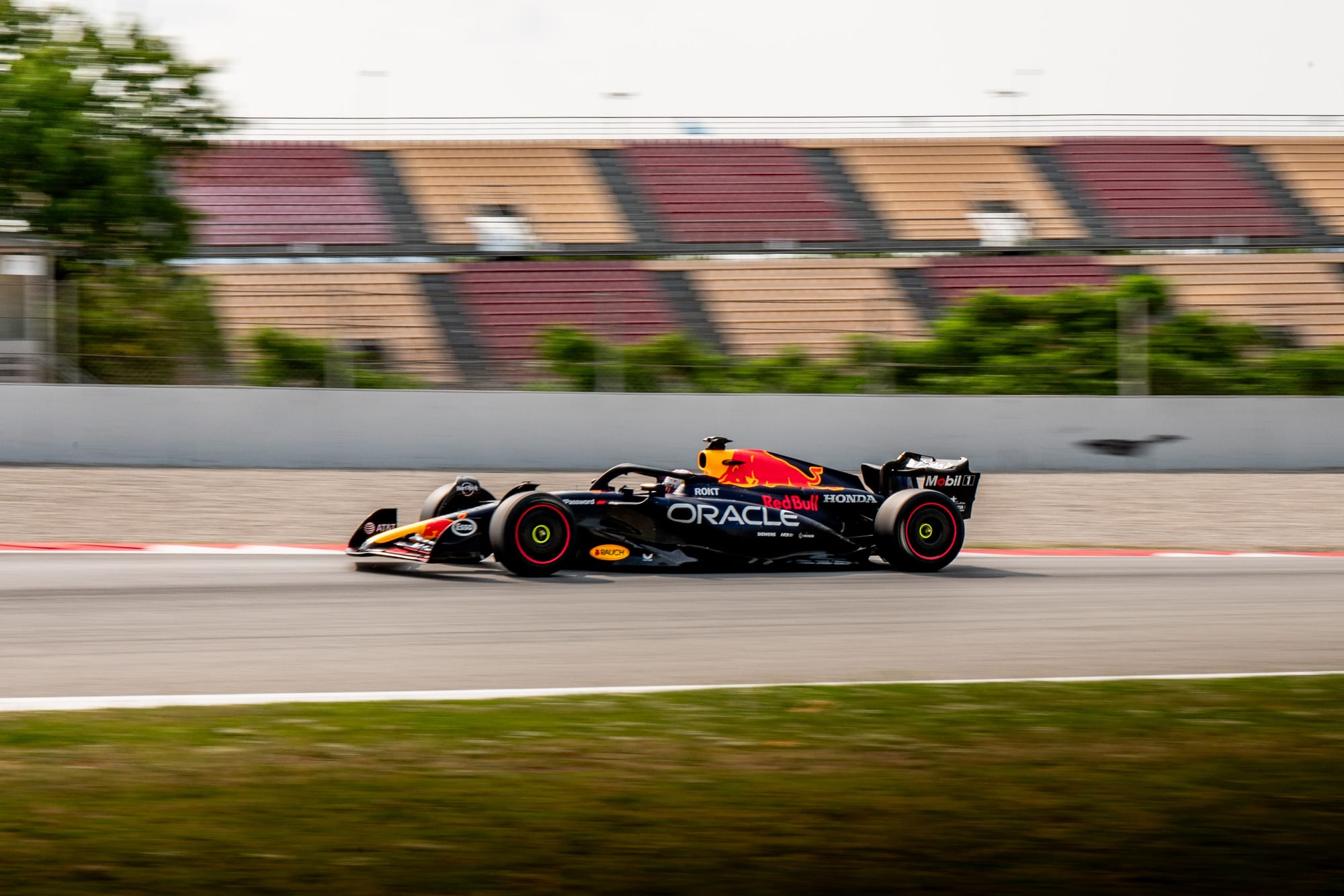
Pirelli’s Barcelona test is one of the final ones that it will be doing prior to it needing to finalise its 2026 constructions.
Under F1’s regulations, the company has until September 1 to homologate the construction while there is a further window until December 1 for it to finalise its compounds.
The next scheduled slick test will take place after the British Grand Prix in July, while a wet weather test will take place on June 19 and 20 with Ferrari at Fiorano to work on rain tyres.


